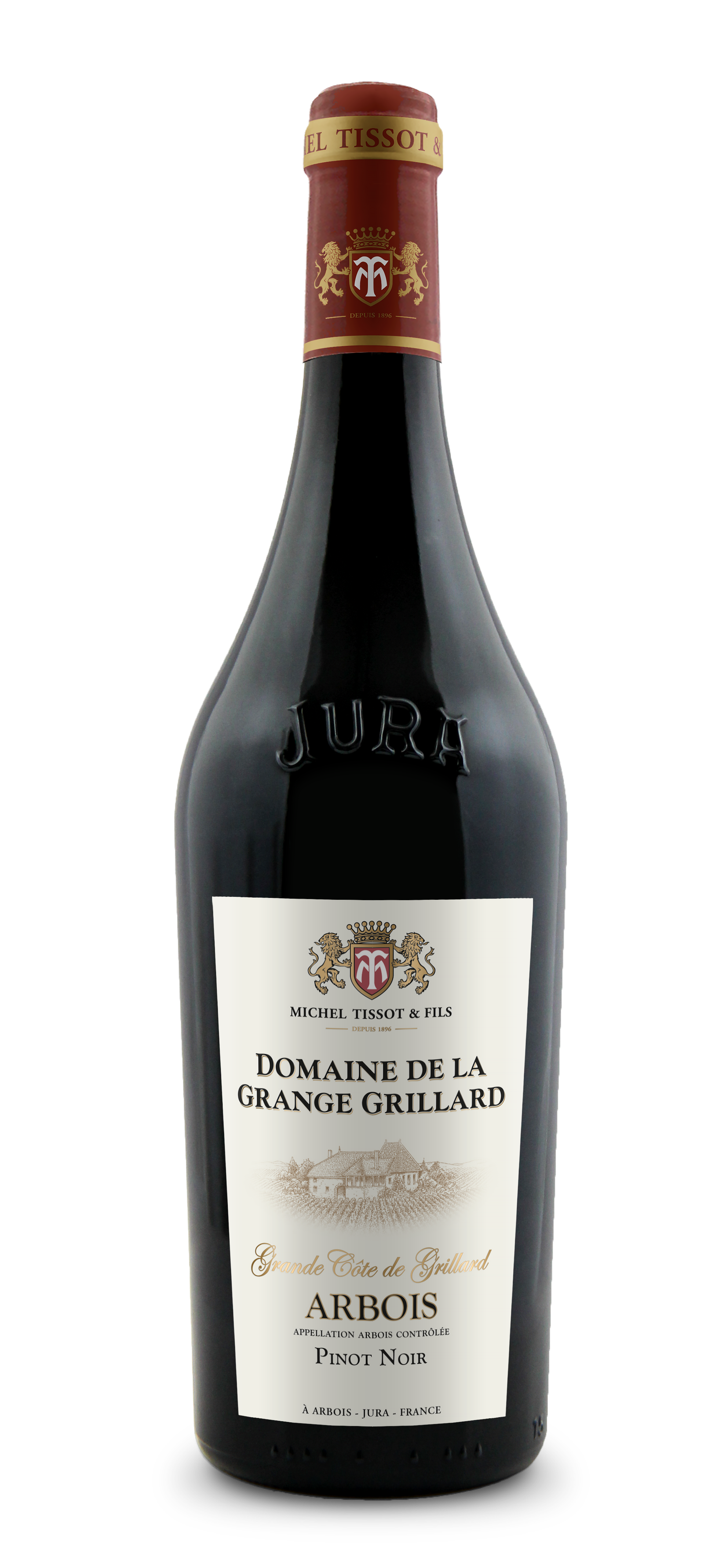ARBOIS PINOT NOIR
GRANDE CÔTE DE GRILLARD
Grape Varieties
100% Pinot Noir
Pinot Noir is often blended with other varieties, for its flavour and cellaring potential. It can also be enjoyed as a single-varietal wine.
Planted since the 15th century in the Jura, on gravelly soils, it is often the first vine variety to ripen in the area. It gives red wines with a strong colour and hints of wild mushrooms, cherries and wild berries.
Tasting notes
With a deep ruby red colour, this wine offers very intense aromas. The nose show flavours of little black fruits, in particular blackberry and blackcurrant and the length is very nice in the mouth, with well-balanced tannins promising a great future.
Food and wine paring
Drink with small games, such as quails cooked with red berries, duck fillet or breast, marinated dishes or in accompaniment of a nice piece of grilled or roasted beef !
Serving suggestions
Serve ideally at a temperature of 15-16°C (59-61 °F).
Ageing potential
A great wine for keeping, 5 to 8 years at least.
Appellation
The Jura wine region is small in size but large in its remarkable diversity. It covers 80 kilometers between Burgundy and Switzerland, in the eastern France.
The Arbois AOC is the oldest and largest of the Jura's four geographic AOCs. In particular, it was France's first AOC (created in 1937). Its name originates in the Celtic words "ar" and "bois" that would mean "fertile land".
Domaine de la Grange Grillard
The Grange Grillard (Grillard barn) and its lands were formerly property of the Cluny Abbey in Burgundy, with vines attested planted there from 1029. The Grange Grillard estate covers nowadays around 37 hectares in the Arbois appellation area.
Grange-Grillard shows a typical landscape of the Jura foothills alternating small flat surfaces and a large coast (grande côte) culminating at 300 m and sloping gently to the Glanon river.
"The Grande Côte de Grillard" covers around 3,4 hectares (8,4 acres) on various soils made of marls and limestone scree particularly favourable to red grape varieties and more specifically to the Pinot Noir. Located on a mound close to the village of Arbois, the estate vineyard is Northwest and West exposed.
Winemaking
Reception of the harvest, with sorting on sorting table. Total maceration of 12 days in thermos-regulated stainless steel tank. Followed regularly throughout the fermentation, incorporating some pumping and pigeage (punching). At the moment of pressing, the press and drop juices of each cuvee are assembled and withdrawn for malolactic fermentation on fine lees.
Ageing, partially in oak barrels (including 15% new oak and 7% of wood from the Jura forest) for 9 months allowing to keep the fruity and typical character of the grape. Bottling is scheduled in June with a light filtration.






